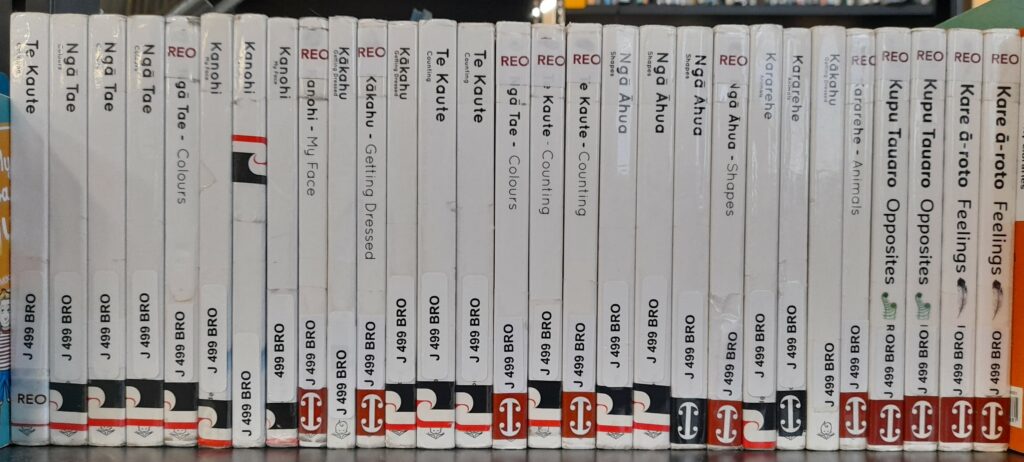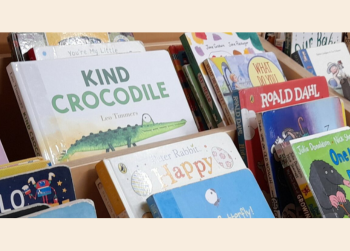In this new series we’ll be shining a spotlight on some of the different collections for children and young people housed within our libraries. First up: Board books!
What are board books?
Board books are aimed at preschoolers and their whānau. As the name suggests, the entire book is printed on heavy board pages, making the book as a whole more durable, less susceptible to chewing and tearing, and making the pages easier for smaller and less dexterous hands to turn.

Board book collections can be found in all of our locations around Wellington – we have over 1600 different board book titles in our collection!

If you’re searching for board books on our catalogue you can simply search for ‘Board books’, or you once you’ve found a book you can click on the Genre/Format heading to take you through to the list of all the board books we have.
High-contrast board books
Let’s take a look at some of the different types of board books you can find in our collection!
Many board books are designed to be read with young babies whose vision doesn’t focus very well yet. Pēpi of this age will enjoy books with high contrast colours, black and white, red, green, and blue. Roger Priddy’s Faces is a good example of a board book with familiar, high contrast pictures. Another example is the Happy Baby series, which feature tri-colour pictures and many familiar objects as the reader says “Hello!” to different animals and other things around them. The Baby Montessori series is another series that utilises simple images and colour combinations to nurture infant visual development.
More high-contrast board books
Interactive and textural board books
As well as illustrations, many board books also incorporate different textures as well as shapes cut into the pages to help little ones develop sensory awareness.
The That’s not my… series by Fiona Watt are all full of different textures for your little one to explore. In this series that t-rex’s tummy is too squashy, that bunny’s tail is too fluffy, that tractor’s engine is too bumpy, that badger’s nose is too shiny, but we do always find our own t-rex or tractor in the end!

Hervé Tullet is a good example of an author who uses cut-out shapes in the pages of his books. In The game of let’s go! the reader follows a textured line through the pages of a book and because of the shapes cut through the pages of the book you can skip from one page to another and see parts of the pathway you’ve been down before or that you will find further in the book. In The game of finger worms, The finger sports game, and The finger circus game there are holes cut in the pages of the book that turn your finger into a puppet acting out what’s happening on the page. You’re encouraged to draw a face on the end of your finger to make it into a more believable puppet too.
More interactive/textural board books

Te reo Māori board books
The Reo Pēpi series is a wonderful series of bilingual board books by cousins Kitty Brown and Kirsten Parkinson. Each pukapuka in this series focuses on a different simple topic and features simple but beautiful illustrations alongside the words in both Te Reo Māori and English. These books can be read one-on-one with your pēpi, exploring the language and illustrations together, and they are also great to be read aloud to a group. This series is a favourite at our Preschool Storytimes and Nohinohi Reorua bilingual storytimes! You can have a go making different animal noises as you read Kararehe, identify the parts of your face with Kanohi, find all the different Ngā Tae around your space, or practice different Mahi.
These are just some of the many, many board books available in our collection. Have a dig through what’s at your local library next time you visit – you might just find a new favourite!


